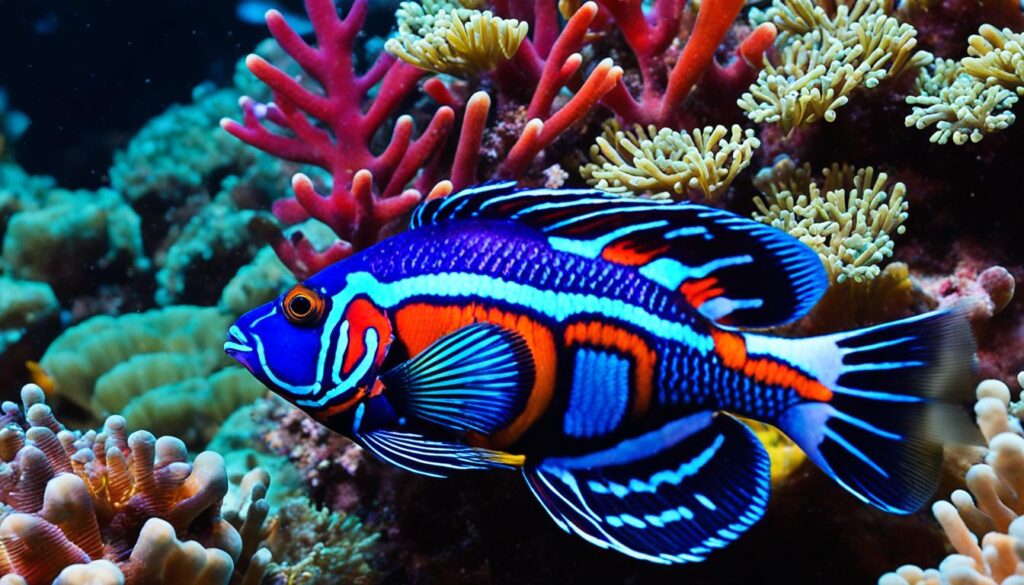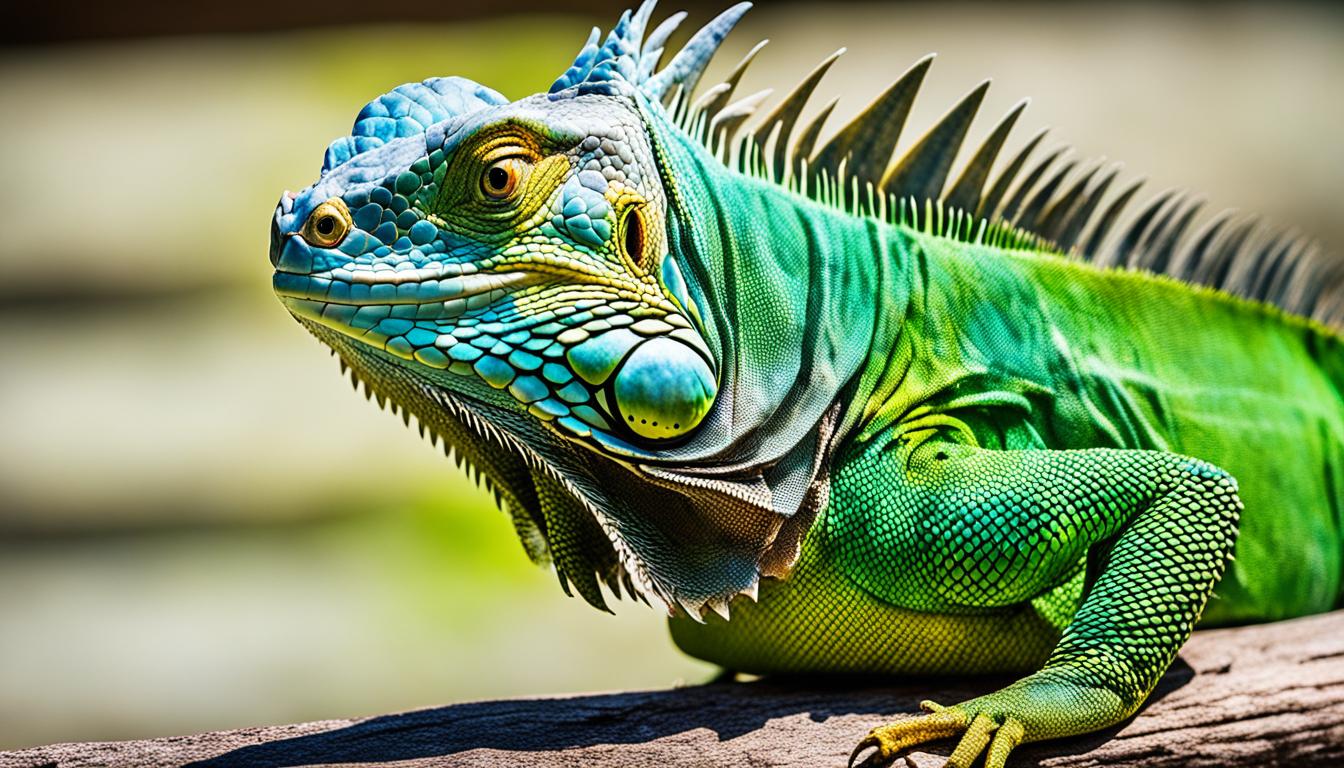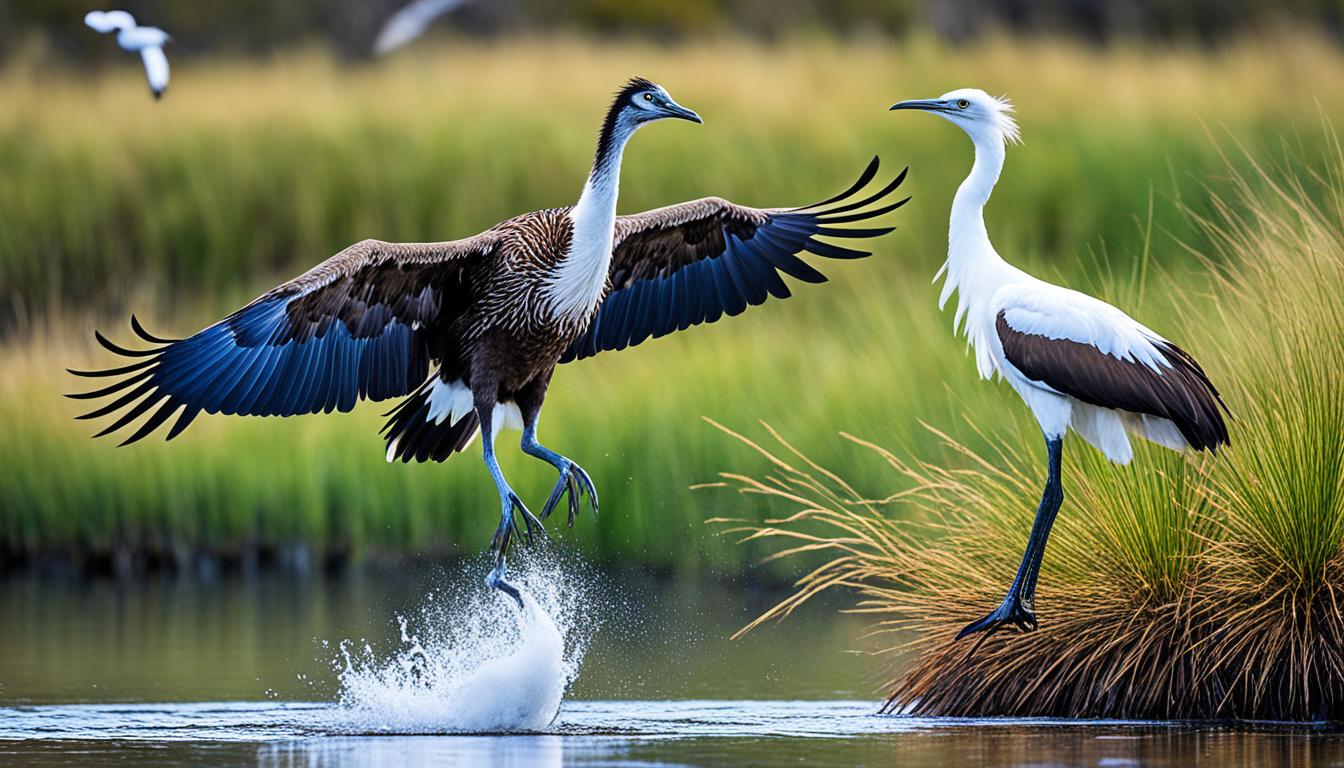Did you realize that color plays diverse roles in the animal kingdom, like luring mates, alerting predators, and assisting in finding food? From mammals to birds, reptiles to fish, our world is populated by a wide variety of colorful creatures. These vivid animals inhabit different environments, each displaying nature’s vibrant colors in a distinct manner. Join us as we delve into the fascinating realm of colorful animals and appreciate the vibrant beauty that envelops us.
Key Takeaways:
- Color in the animal kingdom serves multiple purposes, including attracting mates and warning predators.
- From the African rainforests to the Pacific Ocean, colorful animals can be found in various vibrant habitats around the world.
- Each species utilizes color in its own unique way, whether for courtship, defense, or communication.
- Conservation efforts are crucial to protecting these vibrant creatures and preserving the beauty of nature.
- Exploring the colorful animals of the world reminds us of the incredible diversity and wonder that exists in nature.
Mandrill – The Colorful Marvel of the African Rainforests
The mandrill, native to equatorial Africa, is a truly captivating and colorful mammal. These vibrant creatures are known for their striking appearances, with adult males sporting a bright scarlet snout, blue and white cheeks, and vivid blue, red, and violet skin on their rear ends. These dazzling colors are produced by testosterone, and interestingly, the males become more colorful as they age.
Sexual selection plays a significant role in the mandrill’s colorful display. The most successful males are typically the largest and most colorful, making their appearance an essential factor in courtship and competition for mates. This unique combination of colors makes the mandrill a true marvel of the African rainforests, showcasing the beauty and diversity of equatorial Africa’s wildlife.
| Colorful Features of the Mandrill | Description |
|---|---|
| Bright scarlet snout | Distinctive and eye-catching |
| Blue and white cheeks | Contrasting colors that highlight facial features |
| Vivid blue, red, and violet skin on the rear end | Serves as a visual display of dominance and maturity |
Wattle-cup Caterpillar – A Colorful Warning in Australia
The wattle-cup caterpillar, found in Australia, is truly a sight to behold. With its acid yellow body covered in spikes, this caterpillar is a master of warning coloration. Its vibrant hues serve as a signal to potential predators, alerting them to the caterpillar’s potent defense mechanism.
When threatened, the wattle-cup caterpillar can deliver a sting three times more painful than that of a bee. Its vivid colors act as a powerful deterrent, warning predators of the consequences they may face if they choose to attack.
Formation of Warning Colors
The wattle-cup caterpillar’s bright and eye-catching appearance is a result of its unique biology. The caterpillar synthesizes and stores chemicals in its body that are responsible for its acid yellow coloration. These chemicals not only give the caterpillar its vibrant hue but also serve as a protective barrier.
Interestingly, as the caterpillar goes through metamorphosis and transforms into a moth, its colors change dramatically. After pupation, the caterpillar emerges as a dull brown moth with significantly less eye-catching features.
Comparison of Wattle-cup Caterpillar’s Warning Colors
| Color | Characteristics |
|---|---|
| Acid Yellow | A bright and vibrant hue that warns predators of the caterpillar’s defense mechanism. |
| Dull Brown | The coloration of the adult moth after pupation, serving as camouflage in its natural habitat. |
This fascinating transformation from a colorful caterpillar to a seemingly plain moth highlights the temporary nature of the wattle-cup caterpillar’s warning colors. Despite their ephemeral appearance, these vibrant hues play a crucial role in the caterpillar’s survival.
The wattle-cup caterpillar teaches us the power of color in the animal kingdom. Its acid yellow warning colors serve as a reminder that vibrant hues can be nature’s way of protecting and preserving life in the wild.

Peacock Mantis Shrimp – A Kaleidoscope of Colors Underwater
The peacock mantis shrimp, an impressive creature lurking in rocky crevices under tropical oceans, displays an astonishing array of colors. Sporting shades of green, blue, pink, and yellow, this colorful crustacean is a true marvel of the marine world.
But what sets the peacock mantis shrimp apart from other creatures is its remarkable vision. While humans have three types of color-receptive cones in their eyes, mantis shrimps have an incredible sixteen photoreceptors. This gives them the ability to detect a broader spectrum of colors, including ultraviolet (UV) light.
UV Light Detection
By perceiving UV light, these mantis shrimps can pick up details and patterns invisible to human eyes. UV vision helps them navigate their environment, locate prey, and communicate with each other in ways that are beyond our comprehension.
So, why is UV light detection so important for the peacock mantis shrimp? Well, life under the sea is filled with vibrant hues that appear differently in UV light. Many marine organisms, including corals and anemones, display fluorescent pigments that become even more striking when viewed under UV light. By being able to perceive these colors, the mantis shrimp gains a whole new perspective on its underwater world.
But it’s not just the UV light that fascinates researchers. The peacock mantis shrimp’s ability to see polarized light also astounds scientists. Polarized light is light that vibrates in a specific plane, and many marine creatures use it for navigation, communication, and hunting. While humans struggle to perceive polarized light, the mantis shrimp has specialized receptors that can detect and interpret these subtle visual cues.
| Peacock Mantis Shrimp | Humans |
|---|---|
| 16 photoreceptors | 3 photoreceptors |
| UV light detection | Limited UV light perception |
| Polarized light detection | Difficulty perceiving polarized light |
As our understanding of the peacock mantis shrimp’s vision continues to grow, so does our appreciation for the vibrant beauty of the underwater realm. These extraordinary creatures serve as a colorful reminder that there is so much more to the natural world than meets the human eye.

Greater Earless Lizard – Using Color for Courtship and Defense
The greater earless lizard, found in Texas, New Mexico, and Arizona, showcases its colorful nature in fascinating ways. During the mating season, male greater earless lizards display vibrant hues, including shades of red, blue, green, and yellow, to attract potential female mates. These striking colors not only catch the females’ attention but also convey the male’s strength and genetic fitness.
But the colorful display doesn’t end there. Greater earless lizards also possess a unique courtship tactic – a colorful tail that they wave like a flag to communicate their intentions and ward off potential competitors. The tail is adorned with distinctive black and white rings, creating a visually striking pattern. This tail-waving behavior showcases the lizard’s territorial dominance and acts as a warning to rival males.

In addition to courtship, the colorful tail serves as a defense mechanism. When faced with a predator, the lizard can detach its tail, distracting the attacker while allowing the lizard to escape. The tail will regenerate over time, ensuring the lizard’s survival and ability to engage in future courtship displays.
This courtship tactic and defensive strategy highlight the evolutionary adaptation of the greater earless lizard. Their use of vivid colors in both courtship and defense underscores the significant role that color plays in the survival and reproduction of species in the animal kingdom.
The Greater Earless Lizard in Summary:
| Common Name | Scientific Name | Location | Courtship Colors | Tail Defense Mechanism |
|---|---|---|---|---|
| Greater Earless Lizard | Cophosaurus texanus | Texas, New Mexico, Arizona | Red, blue, green, yellow | Detachable tail with black and white rings |
Blue-Ringed Octopus – Beauty and Danger in the Pacific Ocean
The blue-ringed octopus is one of the most brightly colored creatures in the sea. It can be found in the Pacific and Indian Oceans, captivating with its vibrant appearance. Sporting vibrant blue rings on its body, this octopus uses its colors as a warning to predators, indicating the presence of potent venom.
Despite its small size, ranging from 12 to 20 centimeters, the blue-ringed octopus possesses venom strong enough to kill an adult human. This potent venom is a defense mechanism that helps the octopus protect itself from potential threats in its environment.
These fascinating creatures spend their time hiding in crevices within coral reefs and rock pools. Their brightly colored appearance and hidden nature make them both enchanting and dangerous at the same time, a true testament to the wonders of marine life.

Quick Facts about Blue-Ringed Octopus
- The blue-ringed octopus is known for its vibrant blue rings, which can change in intensity depending on its mood.
- There are several species of blue-ringed octopus, with the most common being the Hapalochlaena genus.
- These octopuses are highly venomous due to the presence of tetrodotoxin, a neurotoxin that can cause paralysis and respiratory failure.
- Blue-ringed octopuses are generally non-aggressive and prefer to use their venom as a last resort when threatened.
- They are primarily nocturnal, hunting for small crustaceans, fish, and other prey during the night.
Stay Beware of The Blue-Ringed Octopus
“The blue-ringed octopus is a stunning creature with its vibrant blue rings, but it’s important to remember that beauty can also be dangerous. Its potent venom serves as a reminder to admire these animals from a distance and respect the wonders of the natural world.”
Gouldian Finch – A Colorful Bird of the Australian Woodlands
The Gouldian finch, one of Australia’s most colorful birds, showcases an array of hues on its small body. Adult males exhibit bright blue, green, yellow, and purple feathers, while their face color can vary between red, yellow, or black. These finches live in open, tropical woodlands and nest in tree hollows. Despite being classified as endangered in certain regions, conservation efforts have led to a rise in the population.
The Gouldian finch, also known as the rainbow finch, is a beautiful and vibrant bird that captures the attention of birdwatchers and enthusiasts worldwide. With its stunning combination of colors, this small finch is a true gem of the Australian woodland.

Native to northern Australia, the Gouldian finch can be found in the open woodlands, grassy savannahs, and shrubby habitats of the region. It prefers areas with scattered trees, where it can build its nests in tree hollows or termite mounds.
The Gouldian finch is highly regarded for its vibrant plumage, particularly the adult males. These males boast a striking combination of bright blue, green, yellow, and purple feathers, creating a kaleidoscope of colors. Their face color can vary, with some individuals having red, yellow, or black faces.
This colorful display serves various purposes for the Gouldian finch. It plays a crucial role in attracting mates, as females are attracted to males with the most vibrant and attractive plumage. The bright colors also help in establishing dominance and territorial boundaries during the breeding season.
The Endangered Status of the Gouldian Finch
Despite its breathtaking beauty, the Gouldian finch faces the threat of extinction. It is classified as endangered in certain regions, primarily due to habitat loss and degradation caused by land clearing, livestock grazing, and changes in fire patterns. The decline of termite mounds, which the finches rely on for nesting, has also contributed to their declining population.
Conservation efforts have been implemented to protect and restore the Gouldian finch’s habitat. These include initiatives to enhance breeding facilities, control predators, and increase public awareness about the importance of conservation. These efforts have shown promising results, with the population of Gouldian finches gradually increasing in recent years.
The Charismatic Charm of the Gouldian Finch
The Gouldian finch’s colorful appearance and captivating behavior make it a beloved species among bird enthusiasts. Its vibrant plumage, small size, and melodious song add to its charismatic charm. Many bird lovers keep Gouldian finches as pets, providing them with spacious aviaries and a high-quality diet to ensure their well-being.
“The Gouldian finch is truly a remarkable bird. Its stunning colors and unique markings make it a symbol of Australia’s rich biodiversity, while its endangered status serves as a reminder of the urgent need for conservation efforts,” says Dr. Sarah Cooper, renowned ornithologist.
As nature’s living artwork, the Gouldian finch continues to inspire and captivate those who have the opportunity to observe its beauty. It serves as a poignant reminder of the importance of protecting and preserving our natural habitats, ensuring that future generations can enjoy the vibrant splendor of this colorful bird.
Mandarin Fish – A Jewel of the Pacific Ocean
The mandarin fish, native to the Pacific Ocean, is truly a showstopper with its dazzling combination of blue and orange colors. This colorful fish, also known as the mandarinfish or psychedelic fish, is a sight to behold beneath the ocean’s surface.

The mandarin fish gets its vibrant hues from specialized cells called chromatophores. These cells contain pigments that reflect and scatter light, creating the mesmerizing display of blues and oranges that adorn the fish’s body. Interestingly, the mandarin fish is one of only two species known to produce blue coloration through chromatophores, making it even more unique and captivating.
With its striking appearance, the mandarin fish stands out amidst the diverse marine life of the Pacific Ocean. Its radiant colors serve multiple purposes, ranging from mate attraction to warning potential predators. The male mandarin fish, in particular, showcases its vibrant colors during courtship rituals to impress and woo females.
“The mandarin fish’s vibrant colors are a testament to the beauty and diversity of marine life. Its dazzling appearance is a visual treat for divers and underwater enthusiasts, and it serves as a reminder of the wonders that lie beneath the waves.” – Marine biologist, Dr. Emily Carter
Found predominantly in reef environments, the mandarin fish is native to the Pacific Ocean, specifically in the region stretching from the Ryukyu Islands of Japan to Australia. These tropical waters provide the ideal habitat for this exquisite and colorful fish to thrive.
While the mandarin fish’s beauty is undoubtedly captivating, it is important to remember that responsible and sustainable diving practices are crucial for preserving the delicate marine ecosystems in which it resides.
Peacock Spider – A Vibrant Dancer in the Insect World
The peacock spider, belonging to the arachnid family, is a stunning creature adorned with glittering blues, greens, oranges, and yellows. With dozens of species, each showcasing its own unique and vibrant colors, the peacock spider is truly a sight to behold.
What sets these spiders apart is their colorful courtship dance. In an intricate display of movement, the male peacock spider performs a mesmerizing dance to impress potential mates. With their brightly colored bodies and intricate leg movements, they create a dazzling spectacle that leaves no doubt about their intentions.
However, this courtship dance is not without risks. If the female remains unimpressed, she may not hesitate to devour the male. It’s a high-stakes game where beauty and performance must be enough to win over a mate.

Peacock Spider Species
There are numerous species of peacock spiders, each with its own unique colors and patterns. Some notable species include:
- Maratus speciosus: This species, also known as the coastal peacock spider, is known for its vibrant blue and red markings.
- Maratus splendens: Found in Western Australia, this species features bright blue, green, and orange colors.
- Maratus volans: The peacock spider’s most famous species, known for its iridescent blue, orange, and black-patterned abdomen.
These tiny dancers captivate researchers and enthusiasts alike with their remarkable colors and intricate courtship rituals. Their existence serves as a testament to the fascinating diversity found within the insect world.
Red-Eyed Tree Frog – A Master of Camouflage with a Colorful Twist
The red-eyed tree frog, native to the rainforests of Central America, is a true marvel of colorful camouflage. During the day, these frogs expertly hide among the vibrant green foliage, their bright red eyes blending in with the surrounding environment. But when disturbed, they reveal their stunning colors, surprising predators and captivating observers.
“The red-eyed tree frog is a brilliant example of nature’s ability to create beautiful and functional camouflage,” says Dr. Samantha Ellis, a herpetologist specializing in tropical amphibians. “These frogs have perfected the art of blending in with their surroundings, while also using their vibrant colors as a warning signal.”
With their neon green bodies, blue limbs, and orange feet, red-eyed tree frogs are a striking sight. Their unique coloration serves multiple purposes in their rainforest habitat. The vibrant hues not only help them blend into the surrounding foliage, but they also serve as a warning to potential predators. When the frog opens its bulging red eyes, predators are startled, giving the frog a chance to escape.
The red-eyed tree frog’s ability to change its appearance is remarkable. In addition to its colorful camouflage, it also has the ability to change the intensity of its colors, depending on factors such as temperature and lighting conditions. This adaptability allows the frog to maintain its effective camouflage in different environments and situations.
Let’s take a closer look at the unique features and adaptations of this fascinating tree-dwelling amphibian:
Distinctive Features of the Red-Eyed Tree Frog
- Bright red eyes that startle predators
- Neon green body for camouflage in the rainforest canopy
- Blue limbs and orange feet, adding to its vibrant appearance
- Average size of 2.5 to 3.5 inches
- Webbed feet for excellent climbing and jumping abilities
The red-eyed tree frog’s unique combination of colors and remarkable camouflage techniques have made it an iconic symbol of rainforest biodiversity. Its vibrant appearance serves as a reminder of the beauty and complexity found in nature’s designs.

| Coloration | Function |
|---|---|
| Neon green body | Camouflage in the rainforest canopy |
| Bright red eyes | Startle predators and provide a warning signal |
| Blue limbs and orange feet | Add to the frog’s vibrant appearance and camouflage |
Conclusion
The world is a canvas filled with an astonishing variety of colorful animals. From mammals like the mandrill with its vibrant facial hues, to birds like the Gouldian finch with its array of colorful feathers, these creatures showcase the beauty and diversity of nature’s palette. Each species harnesses color in unique ways, whether it’s for courtship, defense, or communication.
Exploring these colorful animals not only reveals their vibrant beauty, but also provides insights into the fascinating ways they interact with their environments. Whether it’s the wattle-cup caterpillar warning predators with its acid yellow coloration, or the peacock mantis shrimp creating a kaleidoscope of colors beneath the ocean’s surface, these creatures captivate our imagination.
As we marvel at the vibrant colors of these animals, we are reminded of the incredible wonder that exists in the natural world. These colorful creatures serve as a reminder of the boundless creativity of evolution and the intricate web of life. From the lush rainforests to the depths of the ocean, nature has painted a breathtaking picture with its colorful inhabitants, leaving us in awe of the vibrant beauty that surrounds us.










